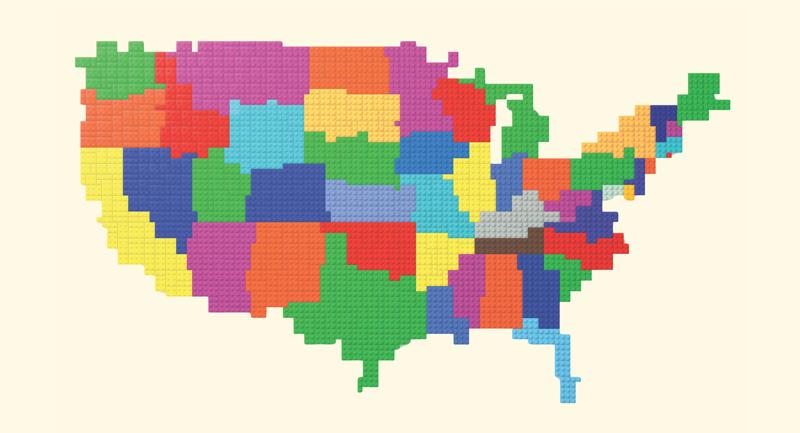Every nine weeks, teachers in many U.S. schools face the dreaded task of completing report cards. Translating each student's performance into a letter grade can be a challenge— and inevitably, the most troublesome questions relate to the fairness and accuracy of the grades given to exceptional learners.
Students with disabilities and English language learners (ELLs) often differ from their classmates in the ways they engage in and contribute to learning activities. Assigning a failing grade to a student who has not met course or grade-level requirements because of a disability or difficulty with the language seems inherently unfair—especially if the student has worked hard, turned in assignments on time, and done what the teacher asked. At the same time, assigning a passing grade to a student who has not met the performance criteria for the grade level clearly provides an inaccurate picture of that student's achievement.
Teachers have received little guidance on how to assign fair grades to exceptional learners, and a number of common myths cloud many educators' thinking about this task (see Myths About Grading Exceptional Learners, p. 32). Most teachers make their own individual grading adaptations—for example, assigning extra points for effort or improvement, basing grades solely on an individual's goals, giving different weight to assignments, or using an altered grading scale (Gottlieb, 2006; Polloway et al., 1994; Silva, Munk, & Bursuck, 2005). But considering the consequences for honor roll status, class rank, and participation in athletics, teachers and students alike generally regard such adaptations as unfair (Bursuck, Munk, & Olson, 1999).
Do teachers have to choose between fairness and accuracy when assigning grades to exceptional students? Can the grades for such students ever be both fair and accurate?
Start with High-Quality Reporting
Before schools can develop and implement policies for assigning fair and accurate grades to exceptional learners, they must ensure that they have a high-quality grading and reporting system for all students. Such systems have two basic characteristics.
First, effective grading and reporting systems base grades on clearly articulated standards for student learning. This changes the meaning of a grade from a single, overall assessment of learning (How did this student perform in language arts?) to a description of the student's performance on an explicit set of skills (How well did the student master the ability to identify the plot, setting, and characters in reading passages?) (Jung, 2009; Jung & Guskey, 2007).
Assigning grades on the basis of precise levels of performance with regard to standards makes the task of grading more challenging (Thurlow, 2002). Nevertheless, it gives students and parents more meaningful information to use in recognizing accomplishments and targeting remediation when needed.
Product criteria address what students know and are able to do at a particular point in time. They relate to students' specific achievements or level of proficiency as demonstrated by final examinations; final reports, projects, exhibits, or portfolios; or other overall assessments of learning.
Process criteria relate to students' behaviors in reaching their current level of achievement and proficiency. They include elements such as effort, behavior, class participation, punctuality in turning in assignments, and work habits. They also might include evidence from daily work, regular classroom quizzes, and homework.
Progress criteria consider how much students improve or gain from their learning experiences. These criteria focus on how far students have advanced, rather than where they are. Other names for progress criteria include learning gain, value-added learning, and educational growth.
The most effective grading and reporting systems establish clear standards based on product, process, and progress criteria, and then report each separately (Guskey, 2006; Stiggins, 2007; Wiggins, 1996). Although this may seem like additional work, such systems actually make grading easier for teachers. They require the collection of no additional information and eliminate the impossible task of combining these diverse types of evidence into a single grade (Bailey & McTighe, 1996). Parents generally prefer this approach because it gives them more useful information about their children's performance in school (Guskey, 2002). It offers parents of both students in special education programs and English language learners specific feedback about their child's achievement on grade-level standards as well as essential information on behavior and progress. This information is helpful for making intervention and placement decisions (Jung & Guskey, 2007).
A Model for Grading Exceptional Learners
With a high-quality grading system in place, schools can develop fair and accurate procedures for reporting on the achievement of exceptional learners. The following five-step model for grading exceptional learners provides a framework for accomplishing that goal. (For a flow chart showing the model, see online atwww.ascd.org/ASCD/pdf/journals/ed_lead/el201002_jung.pdf) It also provides an excellent tool for educators and families as they prepare for individualized education plans (IEPs), 504 plans, and ELL meetings. Step 1. Ask whether the standard is an appropriate expectation without adaptations.
For each reporting standard, the key question is, Can we expect the student to achieve this standard without special support or changes to the standard? If the answer is yes, then no change in the grading process is needed, and the teacher grades the student with the same "ruler" he or she would use with any other student in the class.
Some exceptional learners, however, may not achieve certain grade-level standards without special services and supports. For example, an IEP team may decide that a high school student who has a learning disability in the area of written expression needs extra supports to reach standards that depend on this skill. When an instructional team determines that the student will not be able to achieve a particular standard without special support, they move to step 2.
Step 2. If the standard is not appropriate, determine what type of adaptation the standard needs.
For each standard that will require support, the instructional team asks, Which is needed—accommodation or modification?
Accommodation means that the content of the standard remains the same, but the method for demonstrating mastery of that content may be adjusted. For example, to meet science standards, a student may require an audiotape of lectures in science class because of difficulty in taking notes. In addition, he or she might need to take a social studies end-of-unit assessment orally. Although the format for answering questions would be different, the content of the questions would remain the same, and the student would be judged, like all other students, on the content of his or her responses.
Modification, in contrast, means changing the standard itself. A 3rd grade English language learner, for example, may have strong oral communication skills, but may not be ready to work on the grade-level standards for writing. For this student, the instructional team may decide to provide additional support in the area of writing and to expect the student to master 1st grade writing standards.
To determine whether a particular type of support is an accommodation or a modification, the instructional team must consider the circumstances of its use. An accommodation in one subject area might actually be a modification in another subject area. For example, consider extended time on assessments, one of the most common adaptations. If the purpose of the assessment is to measure the student's knowledge and understanding of particular concepts, then extended time is an accommodation. But if the assessment is designed to measure the student's speed in problem solving, as is sometimes the case with certain math assessments, then the provision of extra time would likely be considered a modification.
If the instructional team determines that a student needs only accommodations to reach a particular standard, then no change in the grading process is required. But if modifications are deemed necessary, the team goes through the remaining three steps of the model for this standard.
Step 3. If the standard needs modification, determine the appropriate standard.
The appropriate standard is what the instructional team believes the student could reasonably achieve by the end of the academic year with special supports. The team records these modified standards as goals on the student's IEP, 504 plan, or ELL plan, along with other goals the student may need to achieve in order to function in daily classroom routines.
A student with cognitive impairment, for example, may not be ready to work on 4th grade science standards in mineral identification. The IEP team may choose to develop science standards on the skill of sorting and classifying that are fundamentally related to the 4th grade science standards but are also developmentally appropriate for this student.
Similarly, a 9th grade English language learner's ELL plan may call for 7th grade vocabulary standards rather than 9th grade standards. Or a physically injured student may have a goal on a 504 plan that requires her to demonstrate an understanding of the rules of a particular sport orally or in writing, but not through actual participation.
Step 4. Base grades on the modified standard, not the grade-level standard.
It would be futile to grade a student on an academic standard everyone agrees the student will probably not meet. Take, for example, the student who has cognitive impairment and who is working on sorting and classifying objects by simple characteristics rather than working on the grade-level expectation of mineral identification. There is no need to report a failing grade in science based on the student's inability to identify minerals. Nor would it be fair or meaningful to simply add points for effort or behavior.
Instead, the teacher should grade the student on the standard the team determined was appropriate (for example,Student will sort objects in science by size, shape, and color with 80 percent accuracy). The same is true for the English language learner who is working to build 7th grade vocabulary in a 9th grade class. Rather than adding points for homework or promptness in turning in assignments, the teacher should grade the student using the same "ruler," but on the 7th grade vocabulary standards that the instructional team deemed appropriate.
Step 5. Communicate the meaning of the grade.
Finally, teachers need to provide additional information for modified standards, communicating what was actually measured. The report card should include a special notation, such as a superscript number or an asterisk, beside grades that reflect achievement on modified standards. The accompanying footnote might be worded, "based on modified standards." The report card should direct families to a supplemental document, such as a progress report, that lists the modified standards on which any grade was based and a narrative of progress on each. This lets everyone know, as federal legislation requires, how the student performed on appropriately challenging learning tasks.
The model described here offers a fair, accurate, and legal way to adapt the grading process for exceptional learners. Using this model, instructional teams agree up front on the achievement standards that are appropriate for the student and report on these separately from progress and process indicators. Then, the school clearly communicates the grades' meaning to exceptional learners and their families through a practical and understandable reporting system. This system provides the information parents and instructional teams need to make effective intervention and placement decisions for students with disabilities and English language learners.
Myths About Grading Exceptional Learners
To ensure that the grades assigned to exceptional learners are both fair and accurate, we need to dispel these widespread myths:
Myth 1: Students with individualized education plans, students with 504 plans, and English language learners cannot legally receive a failing grade.
Fact: Any student, exceptional or otherwise, can legally fail a course. Legal provisions stipulate that individualized education plans (IEPs) must give students with disabilities the opportunity to receive passing grades and advance in grade level with their peers. If appropriate services and supports are in place and the appropriate level of work is assessed, then the same range of grades available to all students is applicable to exceptional learners.
Myth 2: Report cards cannot identify the student's status as an exceptional learner.
Fact: According to guidance recently provided by the U.S. Department of Education's Office of Civil Rights (2008), a student's IEP, 504, or ELL status can appear on report cards (which communicate information about a student's achievement to the student, parents, and teachers) but not on transcripts (which are shared with third parties—other schools, employers, and institutes of higher education) (Freedman, 2000). Even on report cards, however, schools must carefully review whether such information is necessary. There would be no need, for example, to remind the family of a student with multiple disabilities every nine weeks that their child qualifies for special education.
Myth 3: Transcripts cannot identify the curriculum as being modified.
Fact: This is perhaps the most common of all reporting myths. Under the Individuals with Disabilities Education Act (IDEA) of 1997 and 2004, Section 504 of the Rehabilitation Act of 1973, and the Americans with Disabilities Act of 1990, transcripts cannot identify students as qualifying for special services or accommodations— supports that provide access to the general curriculum but do not fundamentally alter the learning goal or grade-level standard. However, schoolscan legally note curriculum modifications—changes that fundamentally alter the learning goal or grade-level expectation (Freedman, 2000, 2005).
Myth 4: Higher grades equal higher self-esteem.
Fact: Probably the most dangerous myth is that students' self-esteem increases with higher grades. Most evidence, however, indicates that this is true only when grades accurately reflect students' achievement. When students receive inflated grades based on material that is not appropriate to their skill level, they actually lose motivation (Ring & Reetz, 2000).








